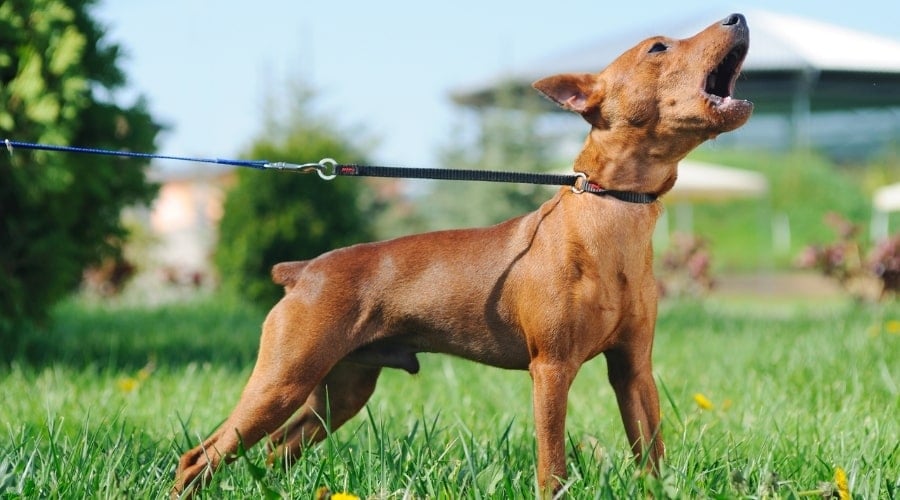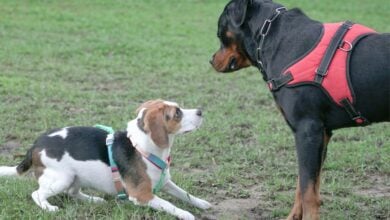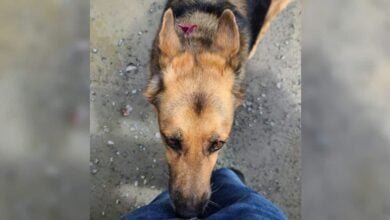Can Dogs See Ghosts? A Deep Sniff Into the Paranormal
When you purchase through links on our site, we may earn a commission. Here’s how it works.
Can dogs see ghosts?
Table of Contents
My dog barks like an absolute maniac at nothing, all day and all night.
At least, I think it’s nothing. Sometimes, I catch a glimpse of a squirrel, a trash truck, or the mailman he’s sworn a lifelong vendetta against. But other times? It’s just… air. Empty space. A blank wall.
And yet, there he is, hackles up, eyes locked, growling like we’re under siege from the spirit world.
Naturally, I started to wonder: Can dogs see ghosts?
Because if mine can, we’re apparently living with at least three of them, and one definitely hangs out by the closet.
Falkor the Poogle Keeps Us Safe… From What, I’m Still Not Sure
If it’s past 9:30 p.m., everyone in my house starts moving like a cat burglar.
We live in an old place with creaky floors, and Falkor, our loyal but overly dramatic Poogle, is always on high alert. The tiniest creak echoes like a thunderclap, and he’ll go full siren mode in seconds.

That part makes sense. What doesn’t?
It’s the times he loses his mind over absolutely nothing. Not any footsteps. No UPS truck. No raccoon raid. Just him, standing in the hallway, barking at… nothing.
So now I’m left with two possibilities:
Either my dog is completely losing it… or I’m sharing a house with ghosts.
Spooky Sniffs and Legends: Fun Facts About Dogs and the Supernatural
For centuries, people have believed dogs can sense things we can’t, especially when it comes to the paranormal. Long before motion sensors and ghost-hunting apps, dogs were considered the original spirit detectors.
Even today, some people claim their dogs react strangely in old buildings, graveyards, or during funerals, whining, pacing, or avoiding certain rooms entirely.
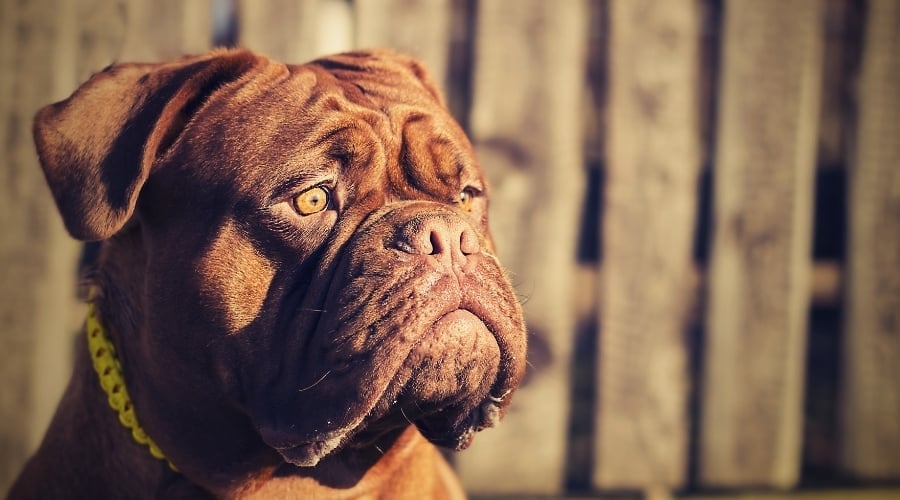
Of course, science has a few more grounded explanations (we’ll get to those). But for thousands of years, one thing’s been clear: dogs have always had a reputation for sensing things we can’t.
From graveyards to haunted castles, dogs have a long, eerie history of showing up right where the supernatural is said to stir.
Howling As a Sign of Doom
In parts of Eastern Europe, a dog howling at night was believed to signal approaching death. Three howls in a row is a premonition that someone may die. Some even believed a dog’s prolonged stare could predict tragedy. Whether it’s superstition or just really good hearing, it’s enough to make you sleep with the light on.
The Black Shuck of England
A massive black dog with glowing red eyes is said to haunt the English countryside. Legend claims that if you see it, something terrible is coming. Some say it’s an omen. Others say it’s just an ancient cautionary tale… with teeth.
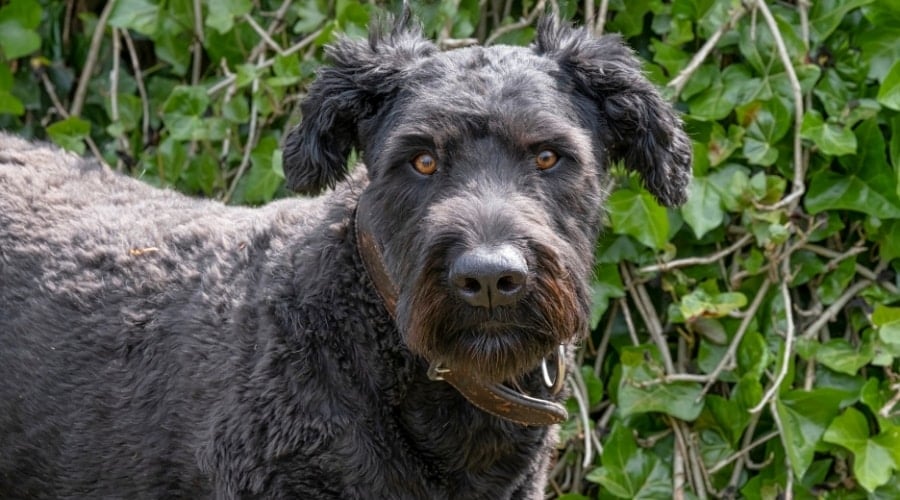
Horror Movies May be Onto Something
The dog is almost always the first to notice something’s off in haunted house films. That trope comes straight from old folklore, and many cultures believed dogs could detect spirits long before any human realized they weren’t alone.
Roman Love for Dogs Went Beyond Life
The Romans didn’t just believe in guarding thresholds. They believed in honoring their dogs for eternity. Archaeologists have discovered ancient pet cemeteries where beloved pups were buried with care, sometimes with inscribed tombstones.
Guardians of the Afterlife: 6 Legendary Roles Dogs Have Played in the Spirit World
Throughout history, dogs have been revered not just as loyal companions in life but also as protectors and guides in the afterlife. Across cultures, these animals have been depicted as guardians at the threshold between the living and the dead.
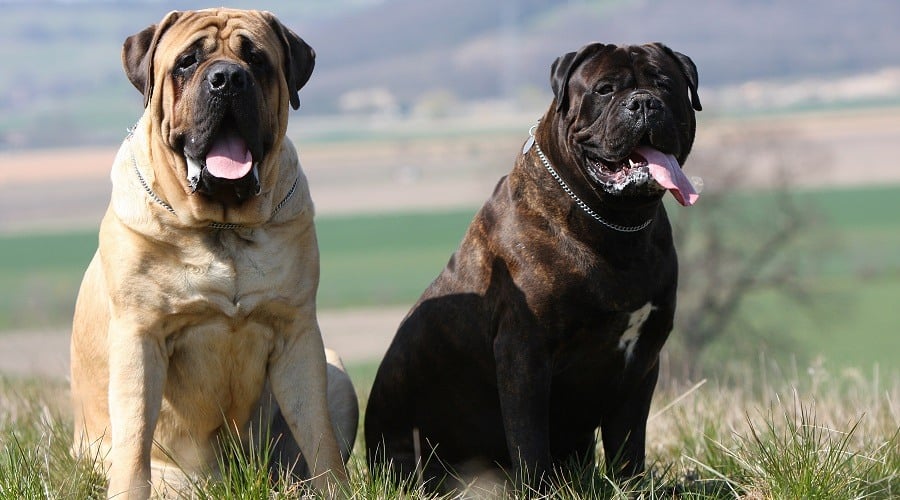
1. Native American Traditions: Loyal Guides to the Spirit World
Many Native American cultures see dogs as spiritual helpers and loyal escorts to the next life. In Lakota tradition, for example, a dog may help guide a soul along the spirit path. In some Plains cultures, dogs were buried alongside warriors or community members to protect them and help carry them safely into the afterlife.
The bond between dogs and humans was considered strong enough to survive even death.
2. Greek Mythology: Cerberus, the Hound of Hades
In Greek mythology, Cerberus is the formidable three-headed dog that guards the gates of the underworld. Tasked with preventing the dead from leaving and the living from entering, Cerberus embodies the ultimate guardian, ensuring the balance between life and death is maintained.
3. Egyptian Mythology: Anubis, the Jackal-Headed Deity
Anubis, often depicted with the head of a jackal, is the ancient Egyptian god associated with mummification and the afterlife. He is considered a protector of graves and a guide for souls transitioning to the afterlife. Anubis’s role underscores the belief in dogs as spiritual guardians.
4. Mesoamerican Beliefs: Xolotl and the Journey to Mictlan
In Aztec mythology, Xolotl is a canine deity who guides souls to Mictlan, the underworld. The Xoloitzcuintli, a native Mexican dog breed, was often buried with the deceased to assist them in navigating the afterlife. This practice highlights the cultural significance of dogs as psychopomps, beings that escort souls to the afterlife.
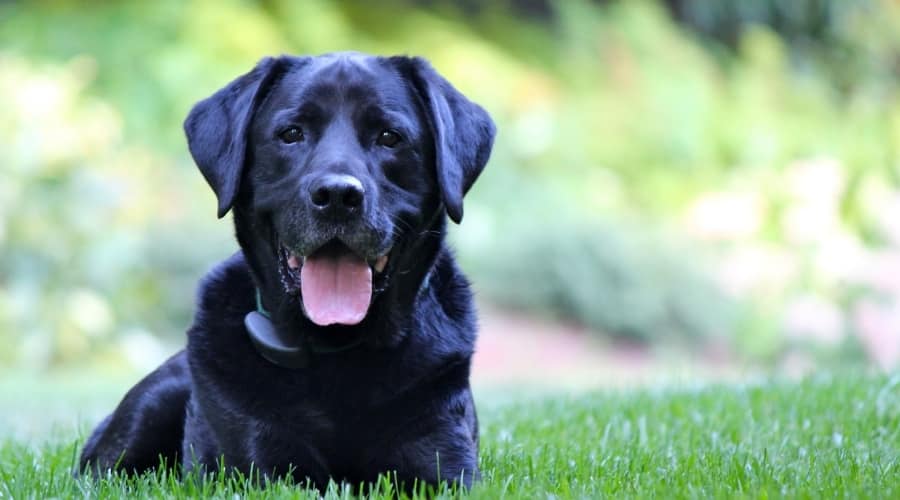
5. Hinduism: Sharvara and Shyama, the Four-Eyed Hounds
In Hindu beliefs, the god Yama, ruler of the afterlife, is accompanied by two four-eyed dogs named Sharvara and Shyama. These hounds guard the entrance to the realm of the dead, ensuring that souls reach their destined place. Their vigilant presence emphasizes the protective role dogs play in the spiritual journey.
6. Zoroastrianism: Guardians of the Chinvat Bridge
Zoroastrian texts describe two four-eyed dogs that guard the Chinvat Bridge, the passage souls must cross after death. These canines assess the righteousness of souls, determining their fate in the afterlife. The belief in dogs as moral guardians reflects their esteemed position in spiritual traditions.
From the deserts of Egypt to the temples of India, dogs have been seen as more than mere animals. They are sacred sentinels, guiding and protecting souls on their journey beyond the mortal realm.
What Science Says About Dogs and the Supernatural
Okay, no, there’s not a peer-reviewed journal titled Canine Paranormal Detection Quarterly.
But science does tell us one thing loud and clear: dogs experience the world in ways we simply can’t.
They hear higher frequencies. They see better in the dark. And their noses? Practically psychic.
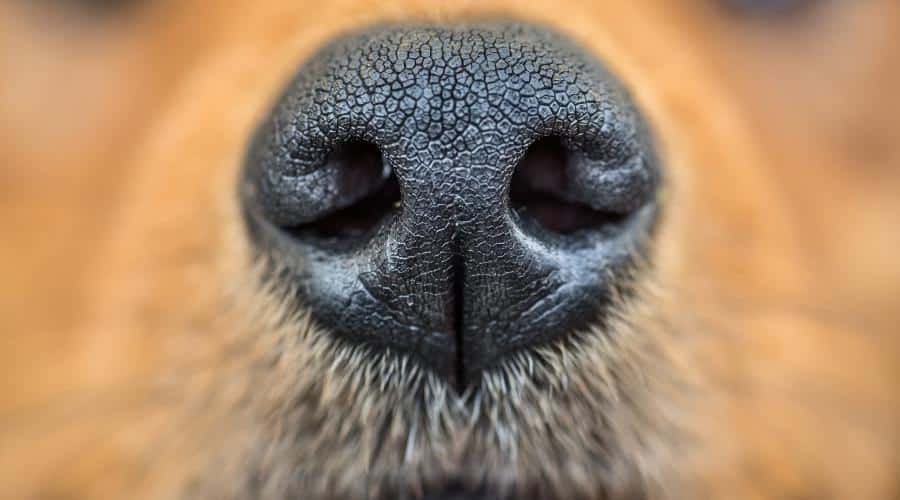
Your dog’s sense of smell is up to 100,000 times stronger than yours. If something, or someone, is in the room, even if it’s not from this dimension, your dog might pick up on it first. Creeped out yet?
Dogs also have incredibly sensitive hearing. They can detect high-pitched sounds like rodent activity inside walls or electrical currents from faulty wiring. They might also react to shifts in air pressure, subtle temperature changes, or even the emotional energy of the people around them.
Did You Know?
Dogs can hear sounds up to four times farther away than humans can.
While we max out around 20,000 Hz, dogs can detect frequencies as high as 65,000 Hz, well into the ultrasonic range. That means your dog might be reacting to things you’ll never hear, like a mouse crawling behind a wall or a far-off high-pitched sound from an electronic device.
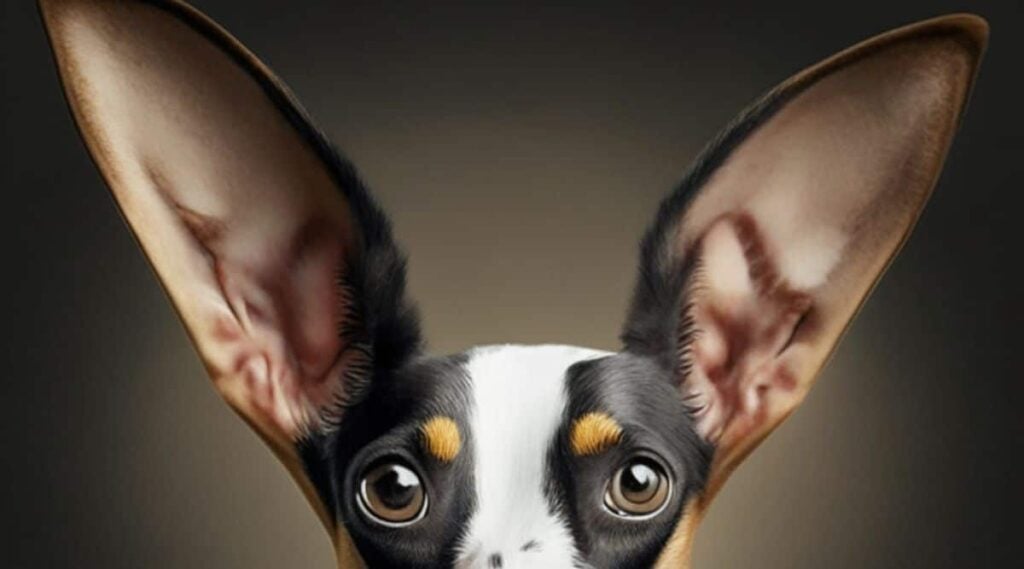
So when your dog suddenly perks up, growls at thin air, or tilts their head at the hallway?
They’re not being weird. They’re just tuned into a frequency we can’t reach.
What Do Dogs Actually See?
Dogs don’t see the world as we do, which might explain some of their spooky behavior. While they don’t see in full color (think muted blues and yellows instead of vibrant reds and greens), they have much better night vision than humans.
Their eyes are built to detect movement in low light, making them excellent at spotting things we’d totally miss in the dark. So when your dog suddenly barks at the empty hallway at 2 a.m.? They might be reacting to something moving in the shadows, just not the paranormal kind.
Are Dogs Actually Seeing Ghosts? Or… Something Else?
Let’s not ruin the fun entirely, but there are a few non-haunted explanations that can make a dog’s behavior seem downright spooky.
- EMF sensitivity: Some researchers believe dogs may react to electromagnetic field changes, which can also cause humans to feel uneasy in “haunted” spaces.
- Changes in scent or airflow: A sudden draft or a trace of scent from long-gone guests can send your dog into alert mode.
- Past trauma triggers: Rescue dogs may react strongly to certain sounds, locations, or objects that remind them of something frightening, even if you can’t spot the pattern.
- Small animals in the walls: Yup. Raccoons. Mice. Squirrels. Your dog might not be barking at a ghost… just a fuzzy attic intruder. Gross, but real.
Still, when you’re home alone, and your dog suddenly stares into the hallway like it just whispered their name, science doesn’t always make you feel better.
- Sometimes, your dog’s barking at a spirit.
- Sometimes, it’s a squirrel in the attic.
- Either way, the vibe is cursed.
What Do Pet Psychics Think?
Not everyone turns to science when their dog stares into the void. Some folks call a pet psychic. Yes, that’s a real thing.
Pet mediums claim they can communicate with animals telepathically, picking up on emotions, past lives, and sometimes… visits from the other side. Some even say our pets serve as energetic protectors, keeping an eye (or snout) out for spiritual disturbances.
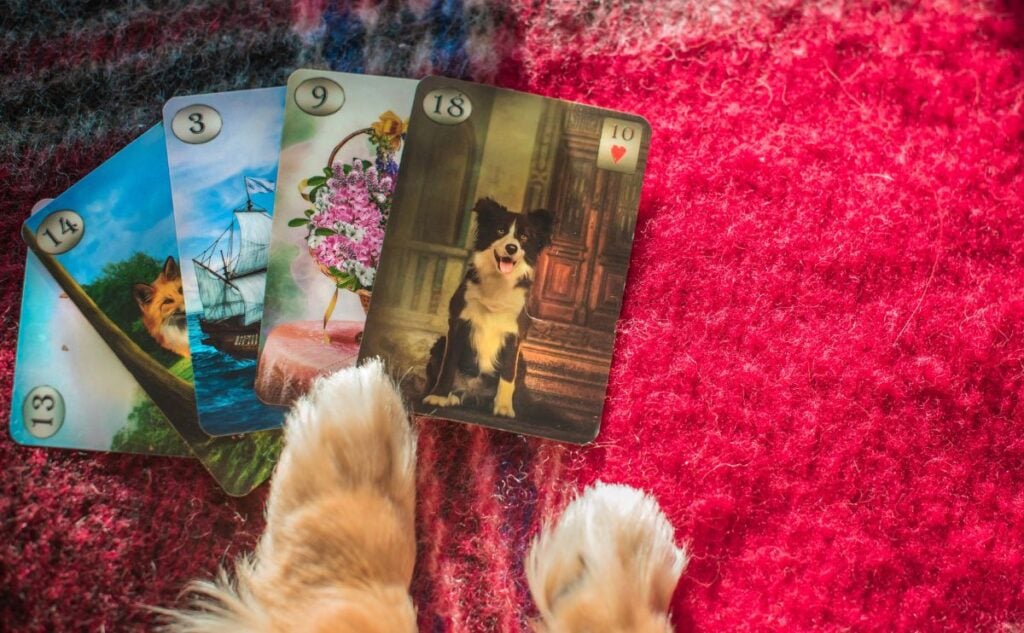
You’ll hear stories of dogs “sensing” a deceased relative in the room, refusing to enter certain areas, or lying down exactly where a lost loved one used to sit.
Animal intuitives like Sonya Fitzpatrick and Amelia Kinkade have made entire careers out of talking to pets, both living and passed. Their readings sometimes include phrases like “your dog says there’s a new presence in the home” or “he’s protecting you from a male spirit who smells like pipe smoke.”
Which leads to the real question:
If dogs could talk, would they say, “There’s a man in old-timey clothes standing by the fridge again”?
Or would they just ask for more chicken?
Whether you believe it or not, one thing’s for sure: your dog knows something. The only mystery is whether it’s spiritual, scientific… or just squirrel-related.
Should I Be Worried About My Dog’s Ghost Encounters?
Take a deep breath. The odds that your dog is seeing a full-blown ghost reenact the Civil War in your kitchen are… low. Really low.
Most of the time, when your dog stares into corners, growls at nothing, or randomly sprints out of the room like it’s haunted, it’s just normal dog behavior.
Their senses are sharper than ours, and they often react to things we can’t detect, like a whiff of an old scent, a faint noise, or a change in light.
So, when should you worry?
Call your vet if you notice:
- Unusual behavior like bumping into things or seeming confused
- Extreme anxiety or aggression that feels out of character
- New behaviors paired with signs of illness or discomfort
- Staring into space frequently and unresponsive to your voice
- Pacing or whining at the same spot night after night
- Excessive barking with no clear trigger, especially during sleep
- Disorientation or seeming “spaced out” during the day
But if your dog is acting totally healthy and just happens to be obsessed with the hallway? You’re probably in the clear.
Feel free to burn some sage, say a quick prayer, or just laugh it off and go back to watching TV.
Your dog might be protecting you from ghosts or just doing his job as the world’s most dramatic security system.
When the Ghosts Are Medical: Senior Dogs and Dementia
If your older dog has started barking at blank walls, staring into corners, or pacing at night like something invisible is following them, it might not be a ghost. It might be canine cognitive dysfunction, also known as doggy dementia.
As dogs age, their brains can experience changes similar to Alzheimer’s in humans. They may seem confused in familiar places, become more anxious, or suddenly start reacting to things that don’t seem to be there. But here’s the twist: sometimes, they really can’t see or hear what’s going on around them.
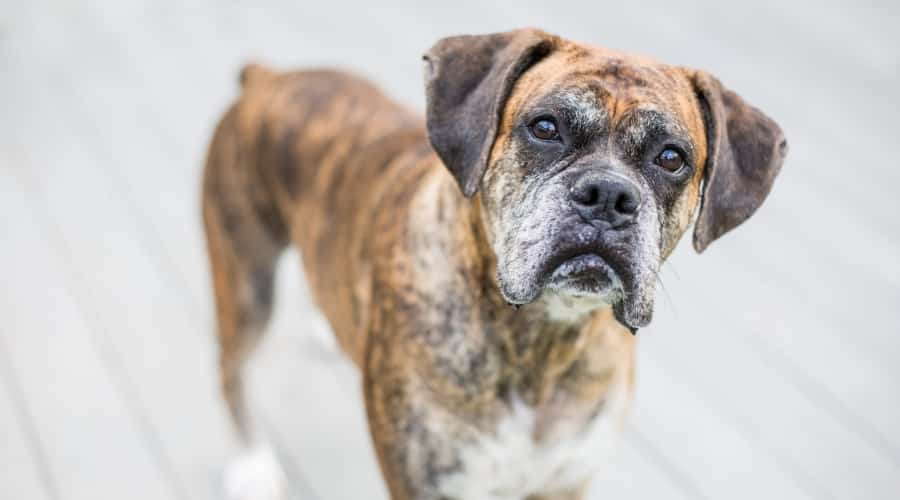
Many senior dogs experience partial or complete loss of hearing and vision. A creaky floorboard or shifting shadow might startle them. A person entering the room they didn’t hear coming might feel like an intruder.
When combined with cognitive changes, the world can feel like a very strange, unpredictable place.
Signs to watch for include:
- Wandering aimlessly or getting stuck in corners
- Excessive barking, especially at night or at “nothing.”
- Disorientation in familiar spaces
- Trouble recognizing family members or other pets
- Increased anxiety, especially in the dark
- Bumping into furniture or ignoring verbal cues
It can look and sound a lot like they’re reacting to something spooky. But often, it’s their senses playing tricks on them, not spirits.
If you notice these behaviors, talk to your vet. Medications, supplements, and lifestyle adjustments (like nightlights, white noise, or scent markers) can make a big difference in helping your senior pup feel safe and grounded.
So, if your dog seems to be barking at ghosts, it might not be the supernatural. Your pup might just be getting older.
Still, if it makes you feel better to burn some sage and whisper, “He’s friendly,” go for it.
Ghosts or Not, Your Dog Knows Something
Whether it’s a spirit, a mouse, or just the wind shifting through the vents, one thing’s for sure: your dog isn’t making it up. They’re wired to notice what we miss.
Dogs read the world through subtle shifts: the flick of a shadow, the twitch of a leaf, the scent of something that passed by hours ago. If your pup suddenly freezes, stares into the darkness, or growls at the hallway, trust that something has caught their attention.
It may not be paranormal. But it is personal to them.
Learning to read your dog’s body language can help you figure out what they’re feeling. Is their tail stiff and high? Are their ears perked or pulled back? Do they look alert, scared, or just curious?
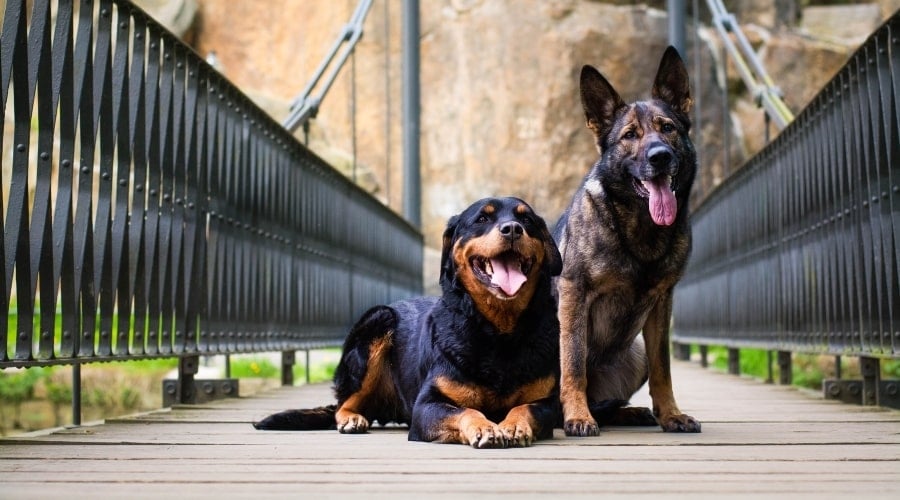
These signals tell you a lot more than words ever could. And if your dog leans into you during those weird moments, makes soft eye contact, or brings you their favorite toy afterward?
That’s not fear… That’s love.
Your dog’s instincts may feel spooky at times, but their loyalty is very real. They’re not just reacting to the world around them. They’re watching over you.
So the next time your dog freezes mid-walk and stares into the darkness?
Maybe don’t panic.
Or do. And just… walk a little faster.
Think Your Dog’s Just Being Weird? Think Again.
Dogs communicate constantly with their tails, ears, posture, and even their blinks. But did you know:
- A slow blink from your dog is a sign of trust (just like with cats)
- A tail wag to the right often means happiness—to the left can mean anxiety.
- Dogs can smell your mood changes thanks to tiny chemical shifts in your scent.
If your dog freezes, stares into the dark, or leans into you after barking at “nothing,” they’re not just reacting to the world. They’re trying to tell you something.
Want to Know What Your Dog’s Really Trying to Tell You?
Whether they’re sensing a spirit or just feeling anxious, your dog is speaking. You just need to know how to listen. Check out our guide to reading dog body language and learn how to spot the signs of fear, love, curiosity, and more.
